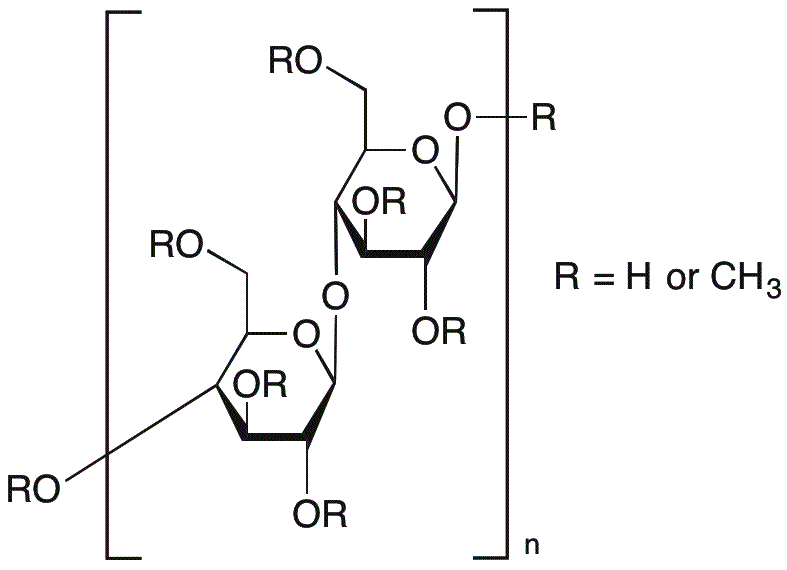Methyl cellulose is widely utilized in research focused on:
- Food Industry: Used as a thickening agent and emulsifier in various food products, enhancing texture and stability while being low in calories.
- Pharmaceuticals: Acts as a binder and film-forming agent in tablet formulations, improving drug delivery and patient compliance.
- Cosmetics: Serves as a stabilizer and thickener in lotions and creams, providing a smooth application and enhancing product performance.
- Construction: Utilized in cement and plaster formulations to improve workability and adhesion, making it easier to apply and enhancing durability.
- 3D Printing: Functions as a support material in additive manufacturing, allowing for complex designs and easy removal post-printing.
General Information
Properties
Safety and Regulations
Applications
Methyl cellulose is widely utilized in research focused on:
- Food Industry: Used as a thickening agent and emulsifier in various food products, enhancing texture and stability while being low in calories.
- Pharmaceuticals: Acts as a binder and film-forming agent in tablet formulations, improving drug delivery and patient compliance.
- Cosmetics: Serves as a stabilizer and thickener in lotions and creams, providing a smooth application and enhancing product performance.
- Construction: Utilized in cement and plaster formulations to improve workability and adhesion, making it easier to apply and enhancing durability.
- 3D Printing: Functions as a support material in additive manufacturing, allowing for complex designs and easy removal post-printing.
Documents
Safety Data Sheets (SDS)
The SDS provides comprehensive safety information on handling, storage, and disposal of the product.
Product Specification (PS)
The PS provides a comprehensive breakdown of the product’s properties, including chemical composition, physical state, purity, and storage requirements. It also details acceptable quality ranges and the product's intended applications.
Certificates of Analysis (COA)
Search for Certificates of Analysis (COA) by entering the products Lot Number. Lot and Batch Numbers can be found on a product’s label following the words ‘Lot’ or ‘Batch’.
Numéro de catalogue
Numéro de lot/série
Certificates Of Origin (COO)
This COO confirms the country where the product was manufactured, and also details the materials and components used in it and whether it is derived from natural, synthetic, or other specific sources. This certificate may be required for customs, trade, and regulatory compliance.
Numéro de catalogue
Numéro de lot/série
Safety Data Sheets (SDS)
The SDS provides comprehensive safety information on handling, storage, and disposal of the product.
DownloadProduct Specification (PS)
The PS provides a comprehensive breakdown of the product’s properties, including chemical composition, physical state, purity, and storage requirements. It also details acceptable quality ranges and the product's intended applications.
DownloadCertificates of Analysis (COA)
Search for Certificates of Analysis (COA) by entering the products Lot Number. Lot and Batch Numbers can be found on a product’s label following the words ‘Lot’ or ‘Batch’.
Numéro de catalogue
Numéro de lot/série
Certificates Of Origin (COO)
This COO confirms the country where the product was manufactured, and also details the materials and components used in it and whether it is derived from natural, synthetic, or other specific sources. This certificate may be required for customs, trade, and regulatory compliance.


